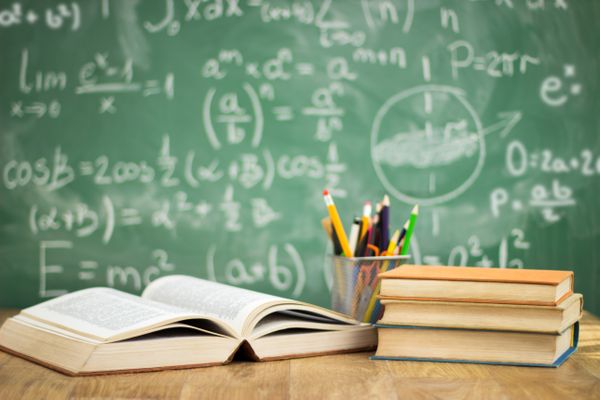4.3.1
Growth of Primary, Secondary & Higher Education
Education in the 1930s
Education in the 1930s
Education steadily improved over the 1930s.


Primary and Secondary education in the 1930s
Primary and Secondary education in the 1930s
- 1927: Most people only went to school for four years.
- 1940: Most people attended school for six years.
- 30% of people continued education from 14-17 although there were school fees too.
- These levels were similar to Britain.


Higher education in the 1930s
Higher education in the 1930s
- Workers had a specialist education.
- One million people had graduated from university by 1940.
- One in three had studied engineering.
Youth Groups in the USSR
Youth Groups in the USSR
The young were recognised as a crucial part of the population. As the future generation, they were crucial to the continuity of communism in the Soviet Union.


Bolshevik youth groups
Bolshevik youth groups
- The Bolsheviks spread communist ideology through youth groups.
- The Young Pioneers was for children aged 10 to 15, and was founded in 1922.
- Komsomol was for people aged 16-28.
- Members of these groups wore uniforms and mainly participated in outdoor activities. They also listened to talks by representatives of the regime.
- Komsomol members were often undisciplined, despite their supposed links to the Party. They were often drunk and engaged in hooliganism.


Youth groups under Stalin
Youth groups under Stalin
- Under Stalin, youth group members were supposed to spy on their parents and act as informants for the regime.


Youth groups under Khrushchev
Youth groups under Khrushchev
- Khrushchev always tried to involve the youth groups in his policies.
- He wanted to use the Komsomol to hold Party officials to account for their actions.


Youth groups under Brezhnev
Youth groups under Brezhnev
- Brezhnev saw the politically ambitious older leaders of the Komsomol as a threat. He emphasised their role in disciplining the members and developing respect for authority.


Historical assessment
Historical assessment
- Michael Geyer and Sheila Fitzpatrick (2009) argue that the 1920s were a period of the intense generational divide in Soviet Russia.
- The Komsomol was a very political organisation and parents were often shocked by the extent to which their children were changed by their experiences within it. They would sing political songs in church, and girls would dress as much like boys as possible.
- Young people generally looked back at this time of their lives with nostalgia.
Orlando Figes on the Early Use of Komsomol in Villages
Orlando Figes on the Early Use of Komsomol in Villages
‘The Komsomol grew much more rapidly than the party in the countryside...The Komsomol was a social club for the bored teenagers of the village. It organized them in a crusade against the Church and the old patriarchal order.’


1Communist Government in the USSR, 1917-85
1.1Establishing Communist Party Control, 1917-24
1.2Stalin in Power, 1928-53
1.2.1The Elimination of Opponents
1.2.2The Purges of the 1930s
1.2.3End of Topic Test - The Elimination of Opponents
1.2.4Stalin's Power Over the Communist Party
1.2.5Stalin's Power During & After the Communist Party
1.2.6End of Topic Test - Power Over the Communist Party
1.2.7A-A* (AO3/4) - Stalin in Power
2Industrial & Agricultural Changes
2.1Towards a Command Economy
2.2Industry & Agriculture in the Stalin Era
3Control of the People, 1917-85
3.1Media, Propaganda & Religion
3.2The Secret Police
4Social Developments, 1917-35
4.1Social Security
4.2Women & Family
5Historical Interpretations
5.1What Explains the Fall of the USSR, 1985-91?
5.1.1Economic Weakness
5.1.2Attempts at Economic Reform
5.1.3Failure To Reform The Communist Party & Soviet Gov
5.1.4Impact of Reforms
5.1.5End of Topic Test - Economic Reform
5.1.6Impact of the Nationalist Resurgence
5.1.7Impact of the Nationalist Resurgence 2
5.1.8End of the USSR
5.1.9Gorbachev & Yeltsin's Responsibility
5.1.10End of Topic Test - Nationalist Resurgence
5.1.11A-A* (AO3/4) - Explaining the Fall of the USSR
Jump to other topics
1Communist Government in the USSR, 1917-85
1.1Establishing Communist Party Control, 1917-24
1.2Stalin in Power, 1928-53
1.2.1The Elimination of Opponents
1.2.2The Purges of the 1930s
1.2.3End of Topic Test - The Elimination of Opponents
1.2.4Stalin's Power Over the Communist Party
1.2.5Stalin's Power During & After the Communist Party
1.2.6End of Topic Test - Power Over the Communist Party
1.2.7A-A* (AO3/4) - Stalin in Power
2Industrial & Agricultural Changes
2.1Towards a Command Economy
2.2Industry & Agriculture in the Stalin Era
3Control of the People, 1917-85
3.1Media, Propaganda & Religion
3.2The Secret Police
4Social Developments, 1917-35
4.1Social Security
4.2Women & Family
5Historical Interpretations
5.1What Explains the Fall of the USSR, 1985-91?
5.1.1Economic Weakness
5.1.2Attempts at Economic Reform
5.1.3Failure To Reform The Communist Party & Soviet Gov
5.1.4Impact of Reforms
5.1.5End of Topic Test - Economic Reform
5.1.6Impact of the Nationalist Resurgence
5.1.7Impact of the Nationalist Resurgence 2
5.1.8End of the USSR
5.1.9Gorbachev & Yeltsin's Responsibility
5.1.10End of Topic Test - Nationalist Resurgence
5.1.11A-A* (AO3/4) - Explaining the Fall of the USSR
Unlock your full potential with Seneca Premium
Unlimited access to 10,000+ open-ended exam questions
Mini-mock exams based on your study history
Unlock 800+ premium courses & e-books